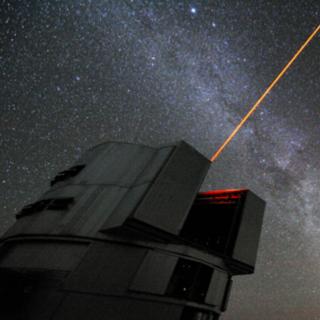Bibcode
Nidever, D. L.; Olsen, Knut; Choi, Yumi; de Boer, Thomas J. L.; Blum, Robert D.; Bell, Eric F.; Zaritsky, Dennis; Martin, Nicolas F.; Saha, Abhijit; Conn, Blair C.; Besla, Gurtina; van der Marel, Roeland P.; Noël, Noelia E. D.; Monachesi, Antonela; Stringfellow, Guy S.; Massana, Pol; Cioni, Maria-Rosa L.; Gallart, C.; Monelli, M.; Martinez-Delgado, David; Muñoz, Ricardo R.; Majewski, Steven R.; Vivas, A. Katherina; Walker, Alistair R.; Kaleida, Catherine; Chu, You-Hua
Bibliographical reference
The Astrophysical Journal, Volume 874, Issue 2, article id. 118, 10 pp. (2019).
Advertised on:
4
2019
Journal
Citations
44
Refereed citations
43
Description
We present the detection of very extended stellar populations around the
Large Magellanic Cloud (LMC) out to R ∼ 21°, or ∼18.5 kpc at
the LMC distance of 50 kpc, as detected in the Survey of the MAgellanic
Stellar History (SMASH) performed with the Dark Energy Camera on the
NOAO Blanco 4 m Telescope. The deep (g ∼ 24) SMASH
color–magnitude diagrams (CMDs) clearly reveal old (∼9 Gyr),
metal-poor ([Fe/H] ≈ ‑0.8 dex) main-sequence stars at a
distance of ∼50 kpc. The surface brightness of these detections is
extremely low with our most distant detection at Σ g
≈ 34 mag arcsec‑2. The SMASH radial density profile
breaks from the inner LMC exponential decline at
∼13°–15° and a second component at larger radii has a
shallower slope with power-law index α = ‑2.2 that
contributes ∼0.4% of the LMC’s total stellar mass. In
addition, the SMASH densities exhibit large scatter around our best-fit
model of ∼70% indicating that the envelope of stellar material in
the LMC periphery is highly disturbed. We also use data from the NOAO
Source catalog to map the LMC main-sequence populations at intermediate
radii and detect a steep dropoff in density on the eastern side of the
LMC (at R ≈ 8°) as well as an extended structure to the far
northeast. These combined results confirm the existence of a very
extended, low-density envelope of stellar material with a disturbed
shape around the LMC. The exact origin of this structure remains
unclear, but the leading options include an accreted halo or tidally
stripped outer disk material.
Related projects

Galaxy Evolution in the Local Group
Galaxy formation and evolution is a fundamental Astrophysical problem. Its study requires “travelling back in time”, for which there are two complementary approaches. One is to analyse galaxy properties as a function of red-shift. Our team focuses on the other approach, called “Galactic Archaeology”. It is based on the determination of galaxy
Emma
Fernández Alvar